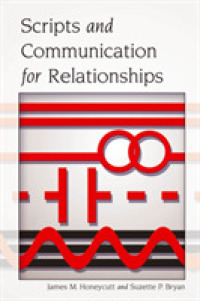- ホーム
- > 洋書
- > 英文書
- > Literary Criticism
Full Description
Flann O'Brien and the Nonhuman is the first book to explore in detail the author's interest in the agency, materiality, and potential sentience of environments, animals and machines. At every turn, O'Brien's writing challenges anthropocentric values and troubles conventional notions of the human. We think of the cast of At Swim-Two-Birds (which features the bird-man Sweeney, a Pooka, and a cow who is called as a star witness in the author's trial) and The Third Policeman's uncanny topographies and atomic hybridisation of people and bicycles, as well as the rain-soaked landscapes, Irish-speaking pigs, and human-seals of An B al Bocht. Yet, O'Brien's deconstruction of conventional narratives of the human-nonhuman binary extends across genres, from the protagonist's strange metamorphosis into a train in the short story 'John Duffy's Brother' to Cruiskeen Lawn's steam men; from O'Brien's stage adaptation of the Capeks' Insect Play to the donkey's tragedy in his late-career teleplay The Man with Four Legs. Drawing on a wide range of methodologies (ecocriticism, the blue humanities, animal studies, cyborg theory, disability studies, posthumanism), paradigms (the Anthropocene, climate change) and theorists (Derrida, Serres, Ngai, Deleuze, Guattari, Braidotti, Saltes, Morton), the contributors unearth new historical contexts for the study of O'Brien, including the long-term impact of the Great Famine, the use of coercive emergency powers during the 1930s and the biopolitical role of air during the Second World War. These interventions not only bring new dimensions of O'Brien's work to the surface, but reveal him as a key but overlooked figure for understanding the role of the nonhuman in Irish modernist cultural production.








